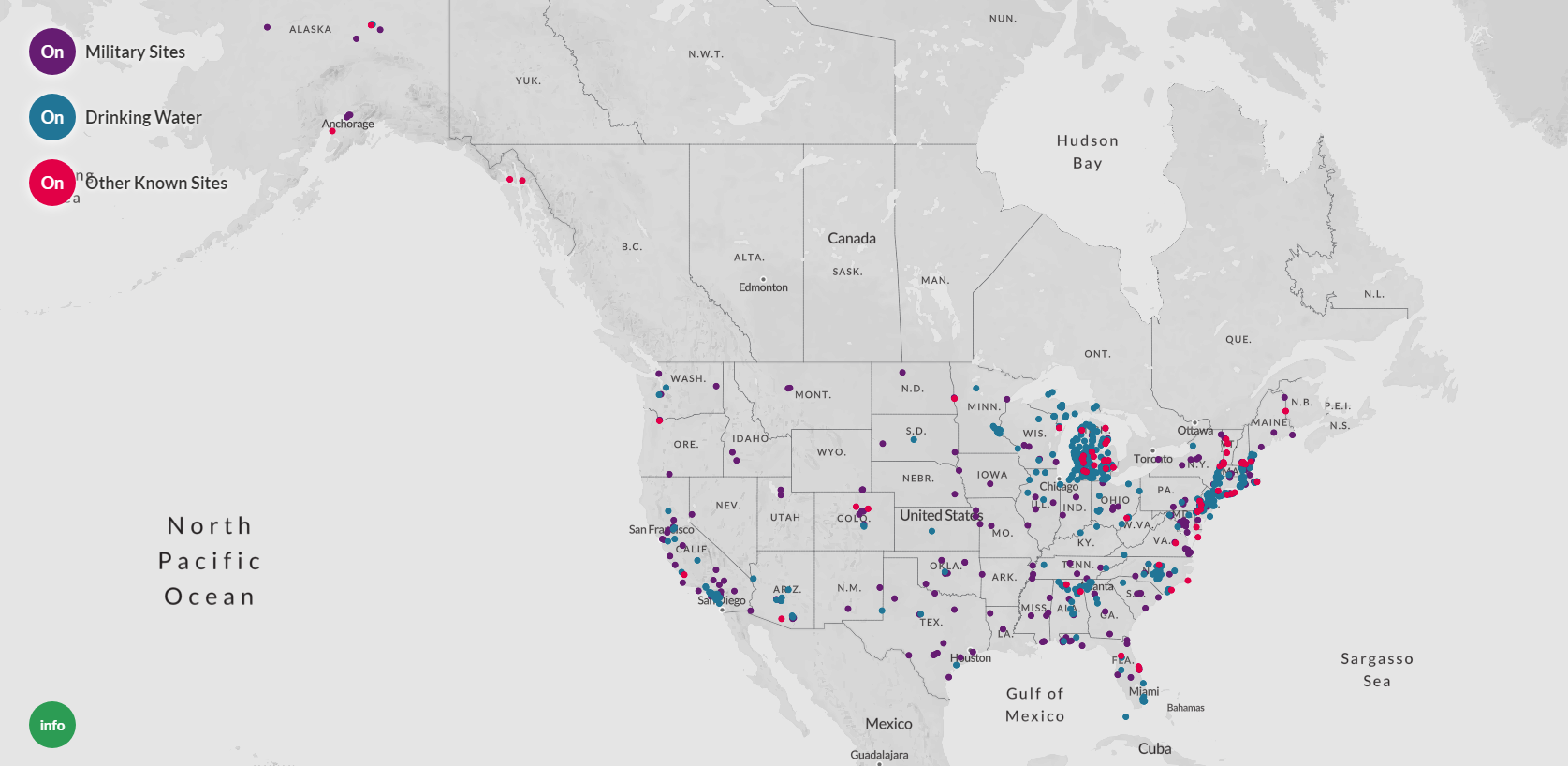In 2019, a wave of litigation related to per- and polyfluoroalkyl substances (PFAS) emerged in the United States, as several states filed lawsuits against PFAS manufacturers, including DuPont, Chemours and 3M. This legal action accompanies increased regulatory scrutiny of this potentially risky class of chemicals. In this article, we will focus on the risks chemical companies face related to PFAS contamination of drinking water in the United States and the ESG risks posed to chemical companies and their investors.
PFAS are a group of synthetic chemicals found in several products, including nonstick cookware, water-resistant clothes, food packaging and firefighting foams. These chemicals are found to be persistent in the environment and are known to bioaccumulate in animals.[i]
Growing scientific evidence has linked PFAS exposure to potential adverse health effects, including metabolism and fertility issues, and an increased risk of cancer.[ii] People can be exposed to PFAS in many ways. Workers may be exposed to chemicals during production, facilities that produce or use these chemicals may expose the surrounding community through their drinking water, and consumers may be exposed through the products they use.
Environmental PFAS contamination in the United States is widespread. Research from the Environmental Working Group and Northeastern University found that 43 states have locations that are contaminated with PFAS chemicals, including some drinking water sites.

Corporate Accountability: What are the risks for chemical companies?
Regulation of PFAS is increasing at the state and federal level in the United States, representing a risk for companies. New regulations focus on lowering the limits for acceptable levels of PFAS in groundwater and soil, as well as requiring companies to implement remediation projects to address PFAS contamination. Costs related to improving filtration systems, modifying production processes, or funding remediation projects may be incurred.
Potential costs associated with PFAS-related litigation are estimated to range from USD 25 billion to USD 40 billion.[iii] The lawsuits mainly focused on the human health and environmental impacts of releases from manufacturing sites and have resulted in several settlement agreements in recent years. In February 2017, DuPont and Chemours agreed to a USD 671 million settlement of over 3,500 cases related to alleged releases of Perfluorooctanoic acid (PFOA) to the water from its Washington Works plant in Parkersburg, West Virginia. In February 2018, 3M agreed to a USD 850 million settlement with the state of Minnesota over allegations that its production of PFCs (perfluorinated chemicals) had polluted drinking water in the state.
There are also ongoing lawsuits against manufacturers of PFAS, which represent a risk for the companies involved. In 2019, the states of New Jersey, New Hampshire, Vermont, and New York sued companies including DuPont, 3M and Chemours for environmental contamination with PFAS. The lawsuits claim that the companies knew of the health risks associated with PFAS yet failed to warn the public. Moreover, both Chemours and 3M face environmental liability-related securities suits, filed in October 2019 and August 2019, respectively. According to these allegations, when DuPont spun out Chemours, its environmental liabilities were “radically” understated.[iv]
Incidents related to PFAS contamination are captured through Sustainalytics’ Controversy Research and feed into companies’ ESG Risk Ratings as part of the Material ESG Issue (MEI) Emissions, Effluents and Waste. The chart below provides an overview of the controversy level for each company that has been targeted by lawsuits related to PFAS contamination.
What are companies doing to mitigate PFAS-related risk?
To mitigate their exposure to PFAS-related risks, companies have taken several steps, including:
- Phasing out certain PFAS: Some companies have taken steps to stop using and manufacturing the most controversial PFAS. In 2000, 3M voluntarily phased out the production of two PFAS substances, perfluorooctane sulfonate (PFOS) and perfluorooctanoic acid (PFOA).[v] For instance, DuPont has committed to eliminate the use of long-chain PFAS (which are generally more toxic and bioaccumulate in wildlife and humans[vi]) in some of its operations by the end of 2019. However, the benefit of these types of initiatives remain unclear, as scientific evidence has shown that short-chain PFAS are highly mobile in soil and water, and therefore lead to faster contamination of drinking water.[vii]
- Improving filtration systems: PFAS are particularly difficult to filter from water due to their physical characteristics. Nevertheless, amid stricter regulations, some companies have taken steps to improve the filtration of these substances. For instance, Chemours has adopted a new carbon adsorption system that enabled a 92% reduction in airborne emissions of GenX and other potentially harmful fluorochemicals compared to 2017 levels. These measures come at a significant cost for the company: Chemours’s investment in state-of-the-art emissions control technologies at its plant in Fayetteville, North Carolina and related remediation activity will cost at least USD 200 million to implement.[viii]
Companies’ exposure to PFAS-related risks stem mostly from legacy issues going back decades. Nevertheless, as PFAS are highly persistent in the environment and in the human body, these issues are still relevant today, as demonstrated by the recent wave of litigation observed in the industry.
While the use of PFAS chemicals has benefited our modern society in numerous ways, it is also creating potentially significant social and environmental concerns. As awareness grows, PFAS contamination-related litigation is also likely to increase outside of the United States. Investors need to be conscious of these risks as they engage with companies manufacturing or using this class of the chemicals in their production processes.
Sources
[i] Agency for Toxic Substances and Disease Registry, 2018, “An Overview of Perfluoroalkyl and Polyfluoroalkyl Substances and Interim Guidance for Clinicians Responding to Patient Exposure Concerns”
[ii] Agency for Toxic Substances and Disease Registry, 2018, “Per- and Polyfluoroalkyl Substances (PFAS) and Your Health”; Environmental Protection Agency, “PFOA, PFOS and Other PFASs”
[iii] Barron’s, 2019, “Sizing Up an Environmental Liability for 3M and Others”
[iv] Courthouse News Service – United States District Court for the District of Delaware, 2019
[v] 3M, 2019,”3M Announces PFAS Initiatives & Actions”
[vi] Environmental Protection Agency, “Risk Management for Per- and Polyfluoroalkyl Substances (PFASs) under TSCA”
[vii] Chemistry World, 2019, “A persistent perfluorinated problem”
[viii] U.S. House of Representatives Document Repository, 2019, “Testimony of Paul Kirsch”




